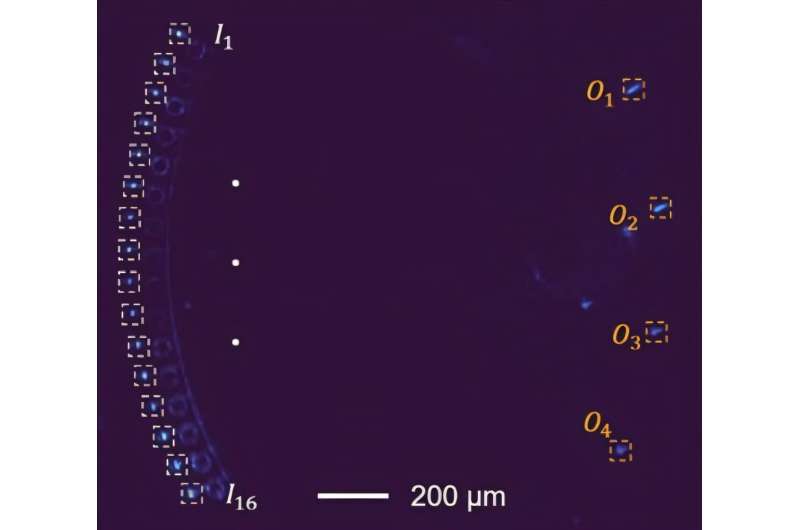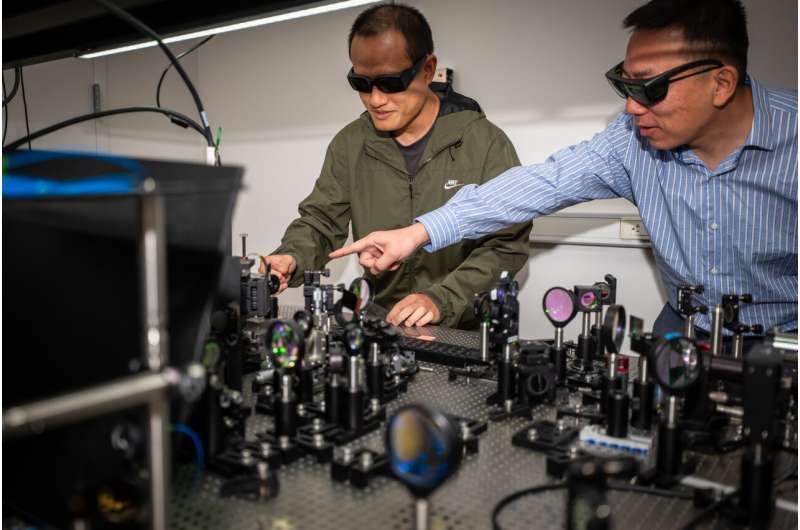
Penn Engineers have created the first chip that uses light to train nonlinear neural networks. This breakthrough could speed up AI training, reduce energy consumption, and lead to light-powered computers.
While current AI chips rely on electricity, this new chip is photonic and uses light beams for calculations. Published in Nature Photonics, this chip revolutionizes how light is utilized for the complex mathematics in AI.
The new chip addresses the challenge of representing nonlinear functions using only light, unlike previous light-powered chips that handled linear operations. This breakthrough allows AI systems to train deep networks and perform intelligent tasks thanks to the nonlinear functions produced by light.
Reshaping Light with Light
A unique semiconductor material responds to light and a pump beam adjusts how the material reacts. By altering the pump beam’s shape and intensity, the signal light can be controlled to perform various nonlinear functions. This programming capability enables the chip to learn in real-time based on feedback.

The chip’s reconfigurable system can express a wide range of mathematical functions by adjusting the pump pattern. This flexibility allows the chip to achieve high accuracy in AI tasks while using fewer operations and avoiding power-hungry electronic components.
Future Directions
The team’s approach could enable more powerful operations like exponential or inverse functions in the future, unlocking the potential for large-scale tasks in AI. By replacing electronics with low-energy optical components, the platform aims to reduce energy consumption in AI data centers and pave the way for photonic computing as a viable alternative to electronics.
For more information, you can refer to the original article published in Nature Photonics: DOI: 10.1038/s41566-025-01660-x


